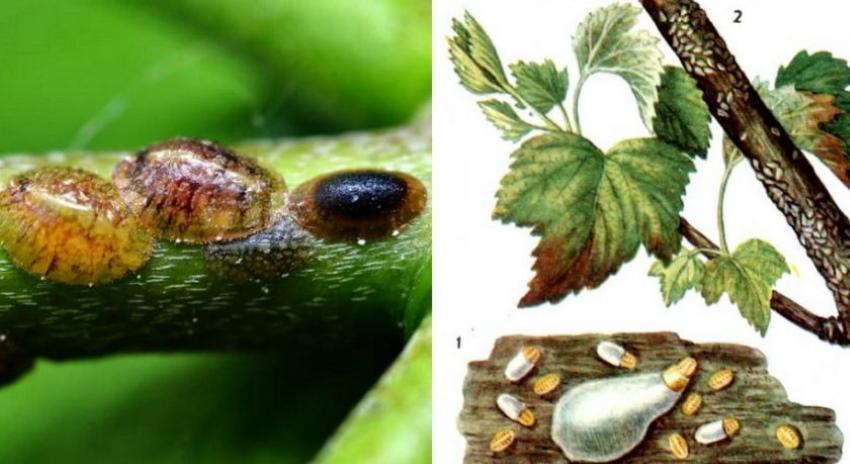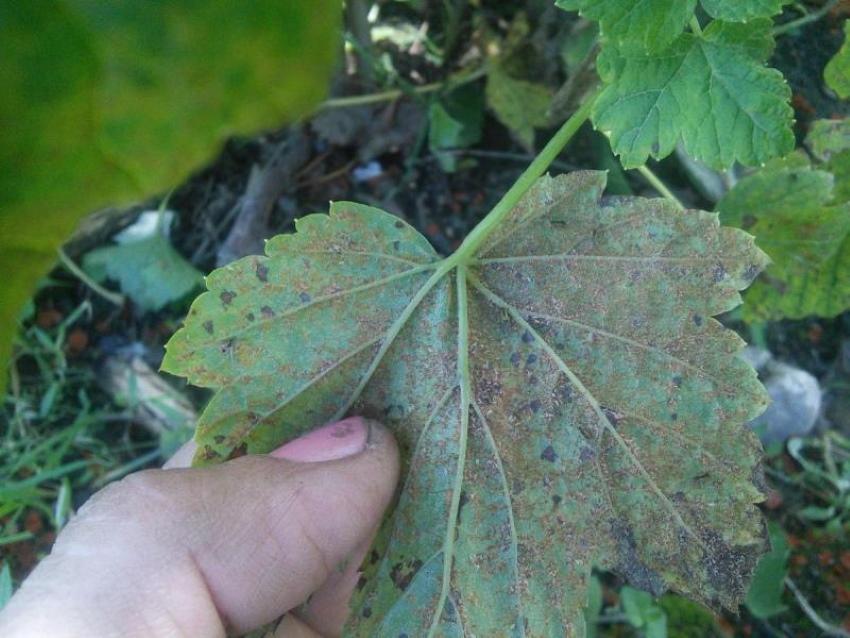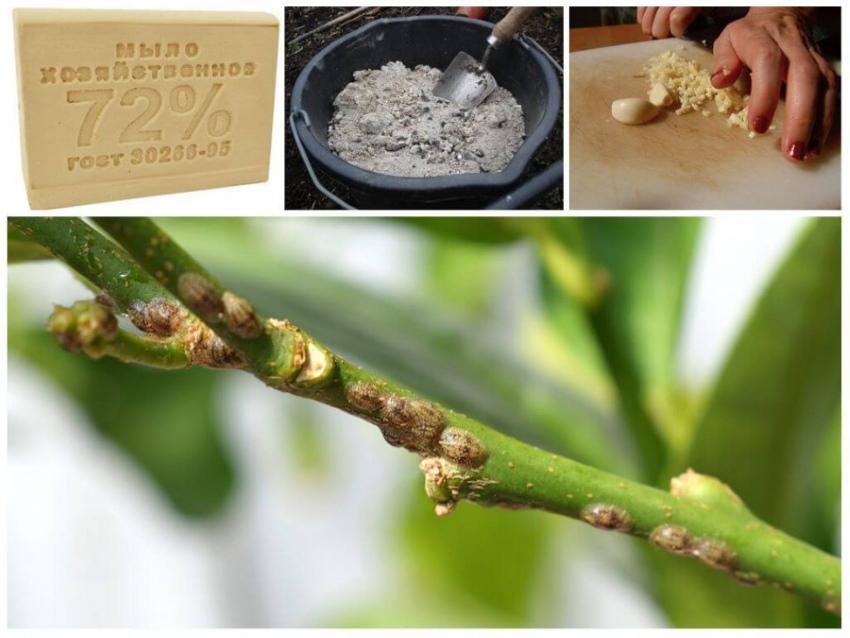How to deal with a scabbard on currants - effective remedies for a persistent pest
 One of the most dangerous pests of berry bushes, including currants, is the scale insect. And the main trouble is not what harm it brings, although it is also significant. It is incredible, but true: it is almost impossible to destroy adult insects, so it is important to know how to deal with the scabbard on the currant as soon as it appears.
One of the most dangerous pests of berry bushes, including currants, is the scale insect. And the main trouble is not what harm it brings, although it is also significant. It is incredible, but true: it is almost impossible to destroy adult insects, so it is important to know how to deal with the scabbard on the currant as soon as it appears.
Both folk remedies and various drugs are effective against young individuals. They are called vagabonds, and the young generation does not yet have a protective shell that would hide them from contact. At this stage, it is not only possible to fight the scabbard, but also necessary.
When the scabbard matures and acquires a hard shield, no drugs will penetrate through it. In addition, insects adhere firmly to the branches, so if they have already multiplied, it is better to uproot the bush. Tearing them off is difficult and pointless in the event of a massive defeat.
Signs of damage to currants with a scabbard

You can understand that a colony of scale insects has settled on currants by the following signs:
- foliage curls and falls;
- leaves and shoots are covered with a dark bloom;
- young leaves grow small;
- inflorescences and ovary crumble;
- young shoots dry up.
The scabbard often attacks old and unkempt currant bushes. If you do not take action, they will die completely in 4 years. And pests will spread further along the site in search of a new "home".
How to get rid of scabies on currants using folk methods
 From folk remedies, infusions with a pungent odor or on a soap base are used. They are sprayed on the bush from all sides and on the back of the leaves, as well as the trunk circle. Currants should be processed every 3 days for a month.
From folk remedies, infusions with a pungent odor or on a soap base are used. They are sprayed on the bush from all sides and on the back of the leaves, as well as the trunk circle. Currants should be processed every 3 days for a month.
Currants can be treated against vagrants:
- a solution of laundry soap;
- ash infusion;
- infusion of tobacco;
- a solution of green soap, mustard, cinnamon, red and black pepper.
To prevent the appearance of pests, shrubs are huddled for the winter, and in the spring they must dig a trunk circle.
Anti-scale preparations
 If there is no time to use folk remedies and often process plants, chemistry will help. The advantages of insecticides are that a single application is sufficient for most of them. Completely destroy the larvae of the scale insects Aktar, Tanrek, Colorado, Actellik.
If there is no time to use folk remedies and often process plants, chemistry will help. The advantages of insecticides are that a single application is sufficient for most of them. Completely destroy the larvae of the scale insects Aktar, Tanrek, Colorado, Actellik.
If the branches are already covered with adult insects, with shields, such shoots should be completely cut out. The shield will prevent drugs from penetrating the insect itself.In addition, the female lays eggs for the second time in the fall, which are under her, under her protection. The insecticides will not reach them, and the larvae will hatch again in the spring. In case of massive defeat, the entire bush should be uprooted and burned.